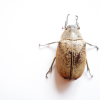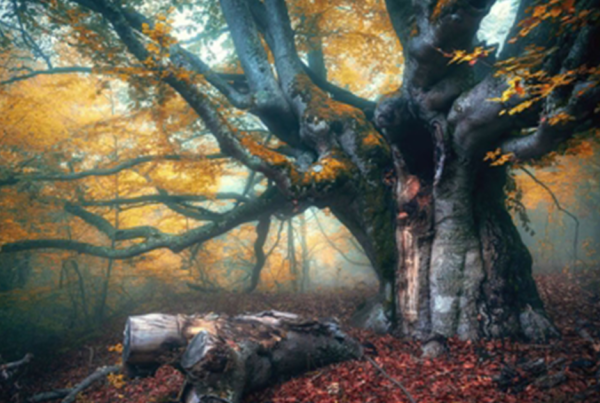
Here are the must-dos to keep your trees healthy and strong in California: inspect for pests, prune properly, mulch, water, protect bark from damage, remove hazardous trees with care, and plant new ones with careful maintenance. By following these steps, your trees will survive winter and thrive come spring.
Quick Points
- Inspect trees for pests and diseases in winter to keep them healthy.
- Prune trees before winter to remove dead or diseased branches and promote vigorous spring growth.
- Mulch around trees to protect root systems from freezing and to retain moisture.
Tips for Winter Tree Care
Inspect for Pests and Diseases
Before winter arrives, inspect your trees for any signs of pests or diseases. Regular checks help keep your trees healthy by catching issues early—look for unusual markings, growths, bark peeling off, discoloration, or disturbed roots. Winter is an ideal time to do this because many pests and diseases go dormant, making them easier to identify. Certified arborists can spot early warning signs more effectively when trees are leafless.
Also, don’t forget to clean up fallen leaves and fruit around your trees; doing so reduces pest populations, prevents disease transmission, and promotes overall tree health. One of the most important aspects of winter tree care is simply staying vigilant through regular inspections.
Winter Pruning Techniques
Pruning in the dormant season is a key step in preparing trees for winter, especially in the Bay Area where most trees experience a true dormant period. Remove dead or diseased branches to revive the canopy, maintain shape, and eliminate weak spots. A major goal of winter pruning is to encourage vigorous growth in spring when trees come out of dormancy.
For fruit trees, moderate pruning cuts made while they are inactive help keep them healthy and productive. It’s best to prune on mild, dry days to prevent disease and minimize damage from cold snaps. Winter pruning also prevents premature sprouting, which can be susceptible to frost damage. By planning your pruning cuts during winter, your trees will be better prepared to withstand storms and put out new growth once temperatures rise again.
Mulching for the Root System
Mulching is vital for protecting tree roots in winter. Apply a 2- to 3-inch layer of mulch around newly planted, young, and mature trees. This layer helps insulate root systems from cold, retains soil moisture, and provides extra warmth—particularly important for fruit trees, which can be more vulnerable to winter conditions.
Good mulching materials include bark mulch, straw, and wood chips from arborists. These materials break down slowly, adding nutrients to the soil over time. When applying mulch, spread it evenly and avoid piling it directly against the trunk to prevent decay and pest issues. A protective layer of mulch is one of the simplest ways to help trees survive cold weather and transition more smoothly into spring.
Watering Schedule During Cooler Weather
Watering remains important during cooler months to keep trees hydrated and strong. For newly planted fruit trees, winter watering helps establish roots before any chance of ground freeze. However, stop watering a few weeks before the ground freezes (in those regions of California where this occurs) to prevent root rot. Deep, infrequent watering is best during dry winter periods to encourage roots to grow downward.
Use soaker hoses or drip irrigation to deliver water slowly and efficiently, ensuring it penetrates the soil to the root zone. Well-hydrated trees are less prone to cold damage because water inside the trunk and branches provides some insulation. While mature trees typically need less water in winter, stay mindful of drying winds that can stress trees even in cool weather. Striking the right balance in your watering schedule is key to winter tree health.
Trunk and Bark Protection
Protecting trunks and bark is especially important for young or newly planted trees with thinner bark. They can be more vulnerable to frost damage, sunscald, and wildlife browsing (especially rabbits or rodents searching for food).
To guard against sunscald and frost cracks, wrap trunks with burlap, apply white latex paint, or use white plastic spiral guards. These solutions reflect sunlight and deter wildlife from chewing the bark. Adding wire or mesh barriers around the base can further protect young trees from rabbits and rodents. By doing this, your newly planted saplings can better withstand harsh winter weather and bounce back strong in spring.
Removing Dead or Hazardous Trees
Identify and remove dead or hazardous trees before winter to help ensure the safety of people and property. Dead trees can become fire hazards or topple during strong winter winds—this is especially important in regions that experience gusty conditions.
If tree removal is complex or poses risks, it’s best to hire a certified arborist or a licensed tree contractor. They can evaluate your trees, recommend next steps, and safely remove any that are unstable. Proactive removal of dead or hazardous trees helps minimize damage from falling branches during severe winter weather.
Planting New Trees Before Winter
Planting new trees before winter can be very beneficial, particularly in California’s mild winter climate. Cooler temperatures and the potential for increased rainfall give young trees a head start by allowing them to focus on root development while they’re dormant.
Choose species that tolerate winter well if you want robust spring growth and reliable fruit production. Surround newly planted saplings with mulch to protect the soil from freezing (if applicable in your area) and to maintain moisture around the roots. Giving new trees time to establish during the winter months will help them thrive once the weather warms up.
Why Does Winter Tree Care Matter?
Continued care for trees throughout the winter keeps them healthy and resilient. Because many tree-care professionals have lighter schedules in winter, it can be easier to arrange maintenance. Spotting potential issues early also gives you time to plan and budget for treatments before the growing season.
Key winter tasks include monitoring for pests, refreshing mulch, and adjusting your watering approach as needed. A 2- to 3-inch mulch layer around the base helps prevent mechanical damage from lawn equipment, insulates roots, and minimizes weed competition. Consistent winter maintenance sets the stage for strong, vibrant growth when spring arrives.
FAQs
Should I cover new trees in winter?
Yes. Covering new or young trees in winter, especially if you’re in a frost-prone area, can protect them from extreme cold and wind. Use a staked covering that reaches the ground to trap warmth.
Why do I need to check trees for pests and diseases before winter?
Addressing them before temperatures drop helps your trees stay healthier and more resilient through the cold season.
When should I prune trees in California?
The best time to prune trees in California is generally during the dormant season: late winter or early spring, before new growth begins. This timing minimizes stress and reduces the risk of disease.
What kind of mulch should I use for tree roots in winter?
Bark mulch, straw, and arborist wood chips are all good choices for insulating roots and helping soil retain moisture.
How often should I water new trees in winter?
Water new trees regularly to establish healthy roots, but stop watering a few weeks before the ground freezes in colder regions to prevent root rot. In many parts of California, where the ground rarely freezes, keep an eye on rainfall and water when the soil is dry.
Contact Image Tree Service for Seasonal Tree Care
Winterizing trees in California involves several proactive steps: checking for pests and diseases, pruning, mulching, watering, and shielding trunks—plus removing any hazardous trees. Planting new trees ahead of winter and maintaining them throughout the season helps ensure they’ll be ready to flourish in spring. The care you provide now pays off in both the immediate health and long-term beauty of your trees.
If you’re interested in professional seasonal tree care services, contact Image Tree Service today to schedule a free estimate. We’re here to help ensure your trees survive winter and thrive in the seasons ahead.















